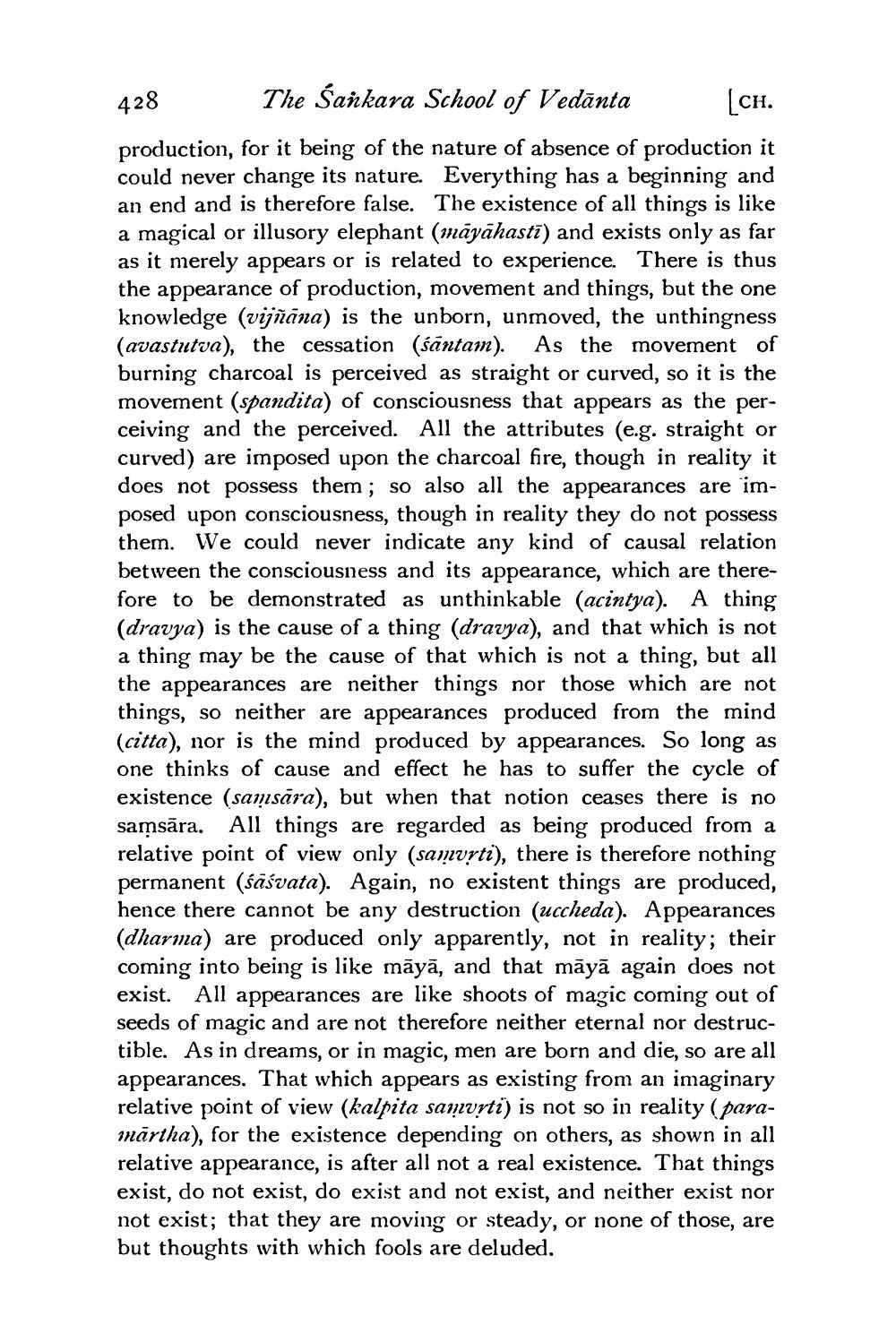________________
The Sankara School of Vedanta
[CH.
production, for it being of the nature of absence of production it could never change its nature. Everything has a beginning and an end and is therefore false. The existence of all things is like a magical or illusory elephant (māyāhasti) and exists only as far as it merely appears or is related to experience. There is thus the appearance of production, movement and things, but the one knowledge (vijñāna) is the unborn, unmoved, the unthingness (avastutva), the cessation (santam). As the movement of burning charcoal is perceived as straight or curved, so it is the movement (spandita) of consciousness that appears as the perceiving and the perceived. All the attributes (e.g. straight or curved) are imposed upon the charcoal fire, though in reality it does not possess them; so also all the appearances are imposed upon consciousness, though in reality they do not possess them. We could never indicate any kind of causal relation between the consciousness and its appearance, which are therefore to be demonstrated as unthinkable (acintya). A thing (dravya) is the cause of a thing (dravya), and that which is not a thing may be the cause of that which is not a thing, but all the appearances are neither things nor those which are not things, so neither are appearances produced from the mind (citta), nor is the mind produced by appearances. So long as one thinks of cause and effect he has to suffer the cycle of existence (samsara), but when that notion ceases there is no samsara. All things are regarded as being produced from a relative point of view only (samvṛti), there is therefore nothing permanent (śāśvata). Again, no existent things are produced, hence there cannot be any destruction (uccheda). Appearances (dharma) are produced only apparently, not in reality; their coming into being is like māyā, and that māyā again does not exist. All appearances are like shoots of magic coming out of seeds of magic and are not therefore neither eternal nor destructible. As in dreams, or in magic, men are born and die, so are all appearances. That which appears as existing from an imaginary relative point of view (kalpita samvrti) is not so in reality (paramartha), for the existence depending on others, as shown in all relative appearance, is after all not a real existence. That things exist, do not exist, do exist and not exist, and neither exist nor not exist; that they are moving or steady, or none of those, are but thoughts with which fools are deluded.
428




